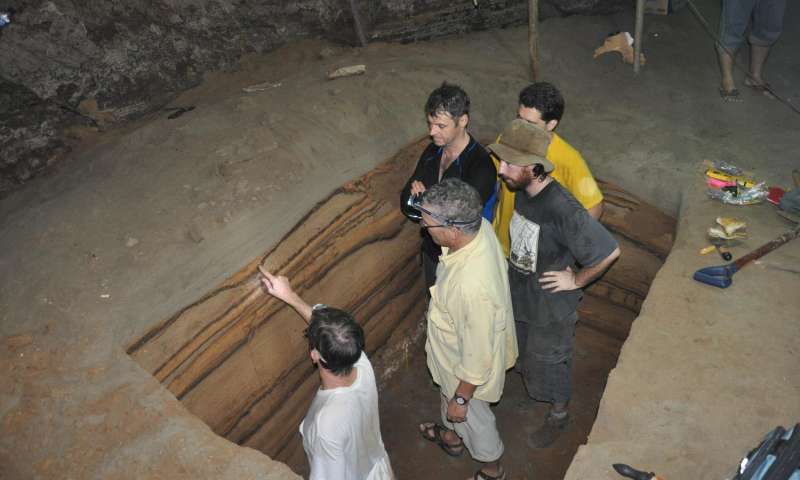At https://phys.org/print419683970.html … geo-scientists have realised dust from the Sahara can play a role in defining Holocene history – and well watered periods of life in the Sahara. A sediment core from Lake Sidi in the Moroccan Atlas Mountains has revealed phases of Sahara dust capture that coincides with arid periods after 12,000 years ago. These are thought to have an origin in dust storms in what is now the Sahara desert and they have been dated at 10,200, 8,200 and between 6600 and 6000 years ago. Remarkably, we may note, these dates conform with big changes in the British Isles – but of a different nature. For example, the date of 8000BC (10,000 years ago) is associated with the severing of the land link between Ireland and Britain, while 6200BC (8200 years ago) is associated with big changes in sea levels around Britain and Ireland, such as the formation of the Solent and the drowning of the southern North Sea basin. The period around 4250BC (6600 to 6000 years ago) is associated with the arrival of Neolithic farmers from the continent – probably from the northern European plain, a remarkable and very long migration that seems to have taken place rapidly.
At https://phys.org/print419671317.html … we learn that a peat bog in Romania was also affected by Sahara dust deposits. Researchers from Northumbria University in Newcastle upn Tyne have explored the bog and found a significant rise in dust levels around 6100 year ago (coinciding with the Moroccan sediment core) in spite of the climate in Europe at that time being wet and cool. The paper is in the journal 'Climate of the Past'. We also learn the current mainstream paradigm is that between 14,000BC and 4000BC the climate in the Sahara was warm and humid due to higher levels of solar radiation as a result of the Milankovitch model, which is said to have modified the African monsoon. After 4000BC the inference is that the monsoon belt moved southwards. The early Holocene is defined as the African Humid Period. However, in contrast to this paradigm, we have three distinct arid phases during the warm and wet phase of Sahara weather and these coincide with big changes in the natural world in other parts of the globe (such as the inundation of Sunda Land around 6200BC). How does solar radiation explain this?
Along the same lines, at https://phys.org/print419661812.html … we are in Indonesia and a 5000 year old sedimentary record of tsunami activity as a result of earthquakes along the Sunda Megathrust, a 330 mile long fault from Myanmar to Sumatra.

